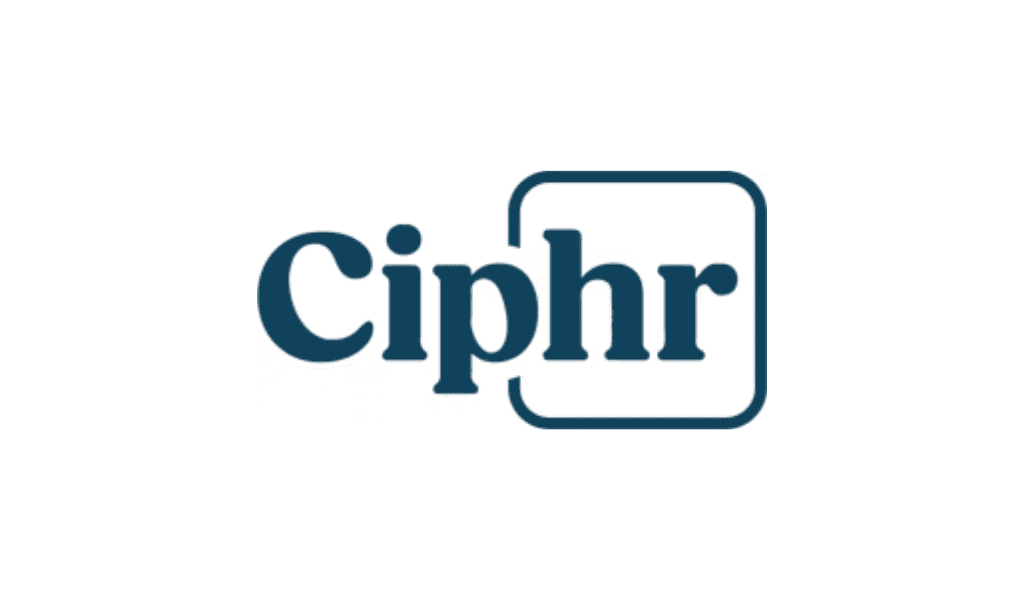Chief People Officer Gary Snyder’s approach to human capital management is pivotal to winning business.
By Kim Shanahan
Let’s assume for a moment that the effectiveness of your HR function was the secret to making or breaking your company. Would you change your HR leadership? Invest more money in the function? Hold the function to a higher standard? Applaud and have confidence that your company is in good hands?
Gary Snyder, chief people officer for food and support services provider Compass Group North America, is responsible for a very unique HR function that not only has a seat at the table but is a key element to winning or losing business. In fact, if Snyder’s HR team can’t execute on finding and retaining the right talent, Compass Group’s clients may seek another outsourcing partner altogether.
The business is among the top 20 employers in North America with 220,000 associates (10 percent being exempt) and $14 billion in annual revenue. Its parent company, Compass Group plc, headquartered in the UK, is now the sixth largest employer in the world, with more than 500,000 employees across 50 countries and more than $28 billion in annual revenue. Prior to joining Compass Group in 2011, Snyder led Bank of America’s consumer sector. Recently, the HR leader offered his insight on strategic workforce planning, internally hiring and mobility, and how HR is directly tied to the success of the business.
In your career, you have held executive-level HR roles in two very different industries and market conditions. Do you think HR is transferable across industries?
Gary Snyder: I believe HR is transferable, however, you need to hone different capabilities depending upon the situation. One of the challenges for HR particularly in the financial services (especially consumer) industry is that headcount and expertise are not necessarily correlated to how the business makes money, which requires an HR team to heavily focus on organizational design and dynamically expanding/contracting workforces. By contrast, Compass is in the contract food and support business (hospitality) where we often take on the employees of our clients. Our people processes can be the key to winning and retaining business.
You were with Bank of America during a period of growth and decline. As an HR professional, what were your experiences?
Snyder: At Bank of America from 2003 to 2007, we experienced good growth mostly driven from the credit cycle. The credit business (mortgage, card, etc.) was in good shape, small business banking was growing steadily, the overall consumer bank was growing well, and there was a predictable earnings stream. We all know what happened in 2007 led by the housing bubble: It all quickly declined and put significant stress on the business.
Through the financial cycle and a series of significant acquisitions, we had to reduce approximately 50,000 employees and merge the others into the Bank’s footprint. Financial services’ mergers typically result in reductions.
In financial services, HR needs to have a skillset around organizational design, talent planning, workforce management, and integrations. They need to be adept at selecting the best talent into combined roles and determining where to reduce headcount to cause the least amount of pain, all while maintaining strong customer service levels.
Legacy Bank of America HR executives lead or have led HR for multiple companies, including Humana, KeyBank, MasterCard, Neiman Marcus, PayPal, USAA just to name a few. How did your experience there prepare you for your role at Compass Group?
Snyder: Bank of America groomed strong HR leaders. I always had a significant day job in addition to the mergers I was responsible for. You learned to be on top of all facets of the workforce (personnel expense, talent selection, compensation, integration, downsizing, plus running a business day to day). At the time, Bank of America did a great job of putting you in a role where you had to demonstrate the ability to multi-task and lead significant initiatives.
How has your experience with Compass Group differed from Bank of America?
Snyder: Compass Group is in the hospitality business and it is very different. Our business is made up of 80 percent food and 20 percent support services (tasks typically outsourced in support services may include patient transport, clinical engineering, grounds keeping, and janitorial services for universities/companies/ hospitals). There is good growth across the business as outsourcing trends in the United States are strong. We are also truly embedded in the business, including the sales cycle and mobilization. If our HR processes are not top notch, potential clients will simply choose a competitor or decide not to outsource.
We operate like a holding company as we do not typically go to market as Compass Group. We have 20 different operating companies in different sectors (some include Levy Restaurants, Restaurant Associates, Bon Appétit Management Company, Flik International, Wolfgang Puck Catering, Crothall Support Services, Chartwells) and are made up of well-known brands. We are an 8 percent margin company and every dollar we invest has to provide a return in terms of stability and predictability for employees and clients.
Our officer group in North America is made up of roughly 18 officers from existing and acquired companies. I was the first externally hired officer in North America. Even with my three-year tenure, we have 350 years of combined legacy years of service on the officer team. Our stability has created much of our success. When we make acquisitions, we work very hard to retain the talent and let companies operate independently, while helping them get more efficiencies out of their back office, supply chain, and shared services/functional support. Many of the founders/CEOs of our acquired companies are still with us and see huge value in our support of them.
North America has been the growth engine for Compass Group plc’s global business over the past four to five years. What challenges have you faced?
Snyder: Since I joined the company three years ago, North America is up 50,000 employees. Given that growth rate, we needed to drive more scalability in our HR processes and infrastructure. We have put in place a lot of new technology and talent development and acquisition programs. The growth we are experiencing and facing is intense, generating approximately $1 billion per year in new business. We will hire 65,000 people this year alone (7,000 of them are exempt) and will promote at least 50 percent internally. Adding 15,000 net people per year, we have to constantly litmus test everything to make sure we can scale to that level.
In our top 300, we have only 7 percent turnover. Instead of creating a blocker mentality though,
our 6 to 8 percent growth actually creates a lot of opportunities. In fact, based on career goals, our associates never really need to leave the Compass family of businesses with the talent programs we have built to support them. We now have a full menu of management assessment and development programs to include: preparing hourly associates and college grads for entry level supervisory roles, single unit to multi-unit management responsibility, cross-business rotations, initiative management and core competency modules (financial acumen, labor management, etc.).
Over the last three years, we have focused on increasing our cross-company development moves to provide people with different perspectives. The result of these efforts has been the sustainability of a front line and middle management talent bench, healthy internal promotion rate, and industry leading client retention results.
At Compass Group, the HR function is very unique. Your function is directly tied to the success or failure of the business. How so?
Snyder: We are one of the few HR shops where inaction could result in lost business. We have to operate very differently than a traditional HR function. If our HR team can’t get the talent, retain the talent or come up with innovative and effective programs, our clients may want to look at an alternative outsourcing partner.
Unlike other companies, 25 percent of our field HR team’s time is with the sales process, 40 percent of their time is focused on mobilizing new accounts and working directly with clients, and the balance is spent working with our HR service center and integrated talent team (sector recruiting, talent management, and talent development).
When we go to market to compete for new business, a significant part of our success is dependent upon our HR processes. We take on our clients’ employees or previous contractor employees and put them on the Compass payroll. They review our philosophy and processes on associate satisfaction, compensation, career/personal development, and diversity and inclusion, making sure that all are at least as good as they already have in place.
Our HR function and programs are a competitive benefit. We need to provide an attractive employee experience, be able to attract the right talent, and optimize the cost structure as we assume our clients’ employees in an outsourcing model. For example, while some of our competitors used the Affordable Care Act to diminish or even eliminate some benefits, we kept our benefits structure and levels intact and used our scale to help control increasing costs, which resulted in higher employee engagement and our being more competitive in bidding processes.
If an HR function in other industries demonstrates mediocre performance, it may result in erosion of HR process, organizational capability, and employee engagement over time. We don’t have that luxury – we have near and long-term consequences from good and poor HR performance. In a traditional company, it is too easy to feel like you are doing a great job, optimizing the balance sheet and believing you are on top of things from a trend perspective. When winning business and retaining customers is dependent upon your HR capability, you have to strive to always be great with benefits, engagement, productivity, and talent processes.
How is Compass Group’s planning cycle different and how does it impact your function?
Snyder: We host an annual people summit, which gathers the top operators from around North America, the top HR partners, and other key stakeholders. We redefine or validate the HR priorities for the upcoming year and we group them in areas of our “People Map:” attract, retain, develop, engage, and perform. Some of the priorities coming out of the 2014 summit include:
• broadening campus and veteran talent initiatives;
• expanding HR data and analytics to forecast employee and job market trends by geography (cross-business);
• increasing capacity in our management development programs;
• creating and funding talent reserves for specific growth categories;
• building further technology solutions for account mobilization processes; and
• progressing our managing inclusion and associate resource network initiatives.
Other companies have similar practices but are typically top down (CEO and CHRO and filtered down). This is ground up, which ensures that HR is part of the business versus just supporting the business objectives.
I believe an additional differentiator is how our executive team makes decisions. Under North America CEO Gary Green’s leadership, we have robust debates and dialogue, and the team looks at least four quarters out operationally (in addition to the strategic plan). From an HR perspective, that lets us plan and get our resources in the right place -120 days, 360 days. We operate within some tight budgets but our management team and HR function don’t make knee- jerk decisions. That in and of itself creates stability and a solid operating and performance philosophy.
Kim Shanahan is president/CEO of accelHRate and can be reached at kim.shanahan@accelhrate.com.
Gary Snyder has been chief people officer for Compass Group North America since December 2011. He is responsible for human resources, communications, and labor strategy management for 220,000 associates in the U.S. and Canada. He previously spent nearly nine years with Bank of America, most of the time in the consumer business. He spent his last two years there as human resources executive for Bank of America’s Consumer Business, which included card and deposit products, home loans, small business, customer service, online and mobile, retail banking, and Merrill Lynch wealth management. He led a global team of HR professionals responsible for recruiting, learning, leadership development, compensation, benefits, diversity and inclusion, and associate relations for approximately $41 billion in annual revenue and 170,000 associates in the U.S., Europe, and Canada. Snyder has broad experience in architecting and delivering change, including serving as the HR executive for the MBNA, LaSalle, and Countrywide mergers. During his career, he has had strong progressive HR leadership roles with USAA, Gateway Computers, and Diageo North America. He graduated with a BSBA from East Carolina University and a Master’s degree in human resources development from George Washington University.
BOX: Three Key Differentiators
Gary Snyder, chief people officer for food and support services provider Compass Group North America, offers three pieces of advice for HR leaders.
1. Benchmark deep and often. We have embraced this whole concept of an external lens and view: How
do you take that and improve your business and everything that touches your talent? We benchmark clients and are constantly revising and revisiting. We have to keep up on it. We have to study what each of these client companies or universities have and match it, or offer better than their programs. It is critical that we have a good portfolio of programs to handle our intense talent demands. We spend as much time on external as we do on the internal. We have found what typically works for our clients works for our employees because it is an ecosystem that is all connected. We have seen that many companies do a lot of informal benchmarking, but you really need to force yourself to get in, look at other industries, look at clients and competitors, and determine what is best for the business.
2. Innovate. We have built some very innovative programs directly in anticipation of the business needs. For example, in large metropolitan markets we have built a trained, certified pool of hundreds of butlers on call for special catering events. Many companies would just look to use contingent labor, however we want to ensure we can deploy qualified and well-trained personnel quickly with the confidence and quality of service our clients have come to expect from a Compass Company.
3. Know the business. We always talk about HR needing to know the business, but there is a big difference between an HR practitioner striving to be a business leader, and a business leader having specialized skills in HR. Developing and driving a truly commercial HR team will give your company a competitive advantage.














